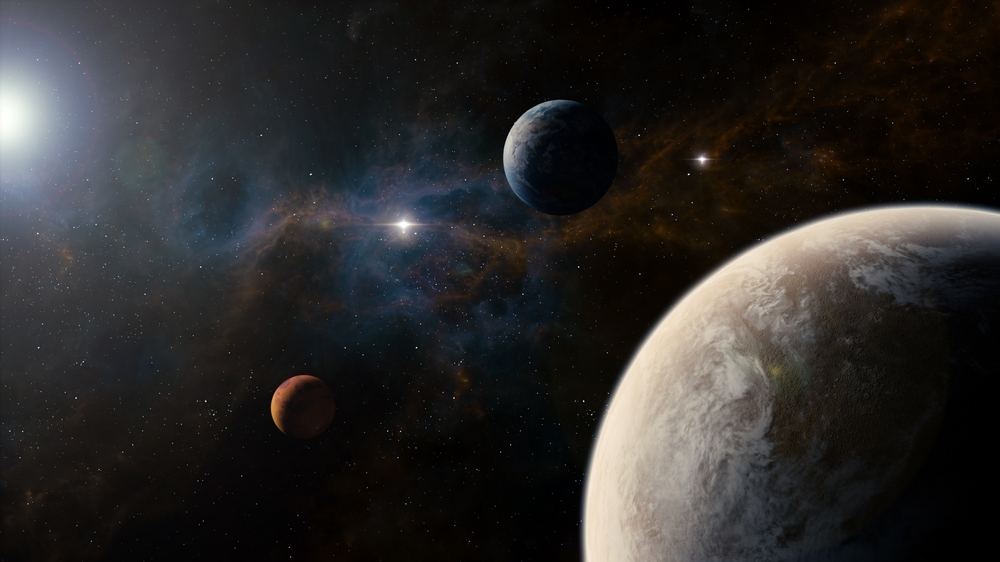An Amazing JWST Image of a Protostar
The James Webb Space Telescope (JWST) has been giving us a fabulous new view on the universe since its launch. This new image of the protostar HH30 is in amazing new detail thanks to the JWST. It was first discovered using the Hubble Space Telescope but this Herbig-Haro object, which is a dark molecular cloud, … Continue reading "An Amazing JWST Image of a Protostar" The post An Amazing JWST Image of a Protostar appeared first on Universe Today.

The James Webb Space Telescope (JWST) has been giving us a fabulous new view on the universe since its launch. This new image of the protostar HH30 is in amazing new detail thanks to the JWST. It was first discovered using the Hubble Space Telescope but this Herbig-Haro object, which is a dark molecular cloud, is a perfect object for JWST. The image shows the protoplanetary disk seen edge on with a conical outflow of gas and dust with a narrow jet blasting out into space.
The JWST is arguably the most advanced space observatory ever built. It was launched on December 25, 2021 and orbits the Sun at the second Lagrange point, about 1.5 million kilometres from Earth. It has a 6.5-meter gold-coated mirror and powerful infrared instruments which can peer through dust to study the formation of stars, galaxies, and even exoplanet atmospheres. It has already given us amazing images of deep space to reveal galaxies from the early universe.

Recently JWST has been used to study the protostar HH30. It’s a young star system located about 450 light-years away in the constellation Taurus and is embedded in the dark cloud LDN1551. At its centre lies a newborn star embedded in a dense disk of gas and dust, which fuels its formation.
HH30 is a Herbig-Haro object, a small, bright nebulae which has been found in a star-forming region. The nebula is created when high-speed jets of ionized gas from the newborn stars collide with surrounding interstellar material. They are typically located near protostars and are often aligned along the axis of bipolar outflows. As the jets travel through space at hundreds of kilometers per second, they create shock waves that heat the surrounding gas, causing it to glow in visible and infrared wavelengths. Herbig-Haro objects tend to be transient, evolving over a few thousand years as the jets interact with changing environments.
The system is best known for its spectacular bipolar jets, which shoot out from the protostar at high speeds. Observations from the Hubble Space Telescope have revealed a stunning silhouette of the dusty disk, seen edge-on, obscuring the central star while allowing astronomers to study the complex processes of star and planet formation.
The team of astronomers combined images from JWST, HST and the Atacama Large Millimetre Array (ALMA) so that they could study the appearance of the disk in multiple wavelengths. The observations have been wonderfully captured in this new image that has been released as Picture of the Month. HH30 is seen in unprecedented detail.

JWST is known for its infrared capabilities and allowed the team to track the location of sub-millimetre sized grains of dust but ALMA allowed the team to explore further. Using ALMA millimetre-sized grains of dust were studied revealing that they, unlike the smaller dust grains, were found in a narrow region in the plane of the disc. The smaller grains were found to be much more widespread.
The study concluded that larger grains of dust seem to migrate within the disc and settle into a thin layer. It’s thought this marks an important part of the formation of planetary systems with the grains clumping together to form smaller rocks and ultimately into planets.
Not only did the study reveal the behaviour of grains of dust in HH30 but it also uncovered a number of different structures embedded within one another. A narrow, high-velocity jet was seen to be emerging from the central disc. The jet seems to be surrounded by a wider, rather more cone shaped outward flow of gas. Not only does this study help us to learn more about how exoplanetary systems form but it helps us to understand more about the origins of our own Solar System.
Source : Webb investigates a dusty and dynamic disc
The post An Amazing JWST Image of a Protostar appeared first on Universe Today.










































































